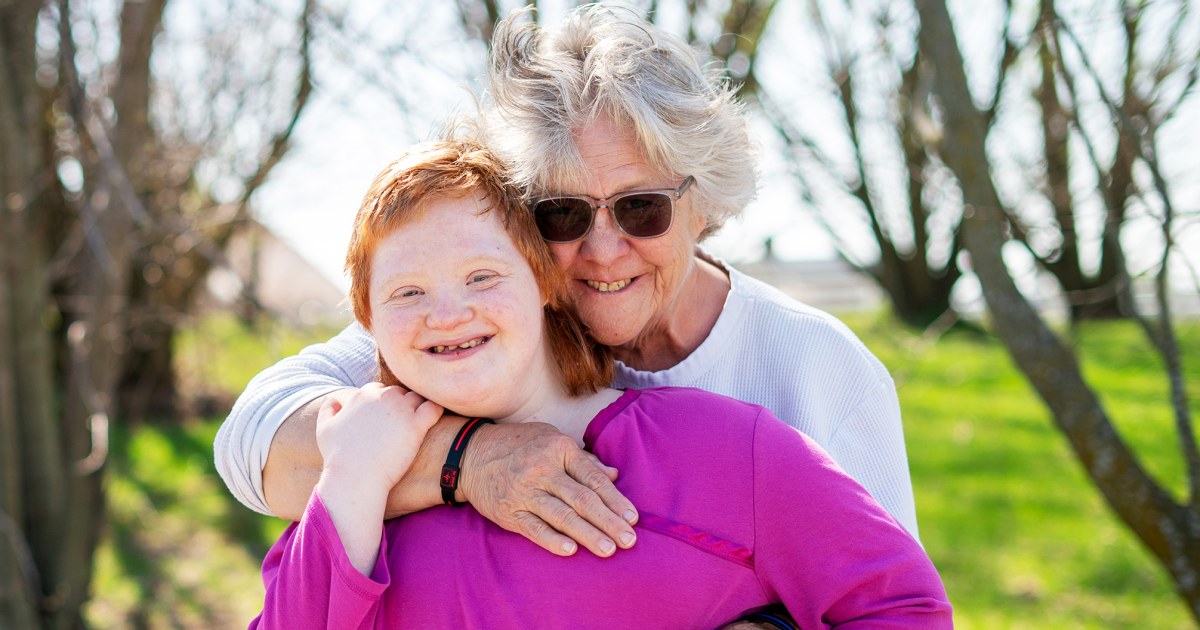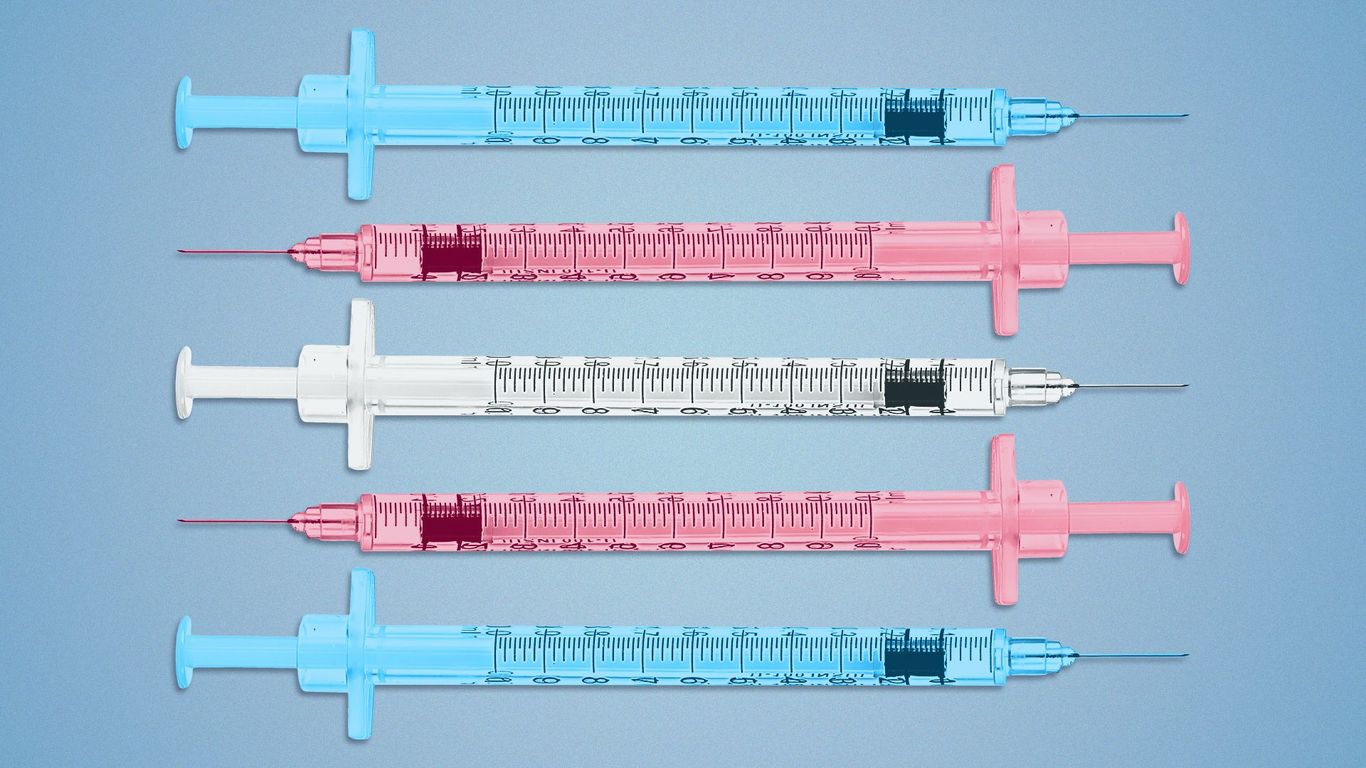
I wrote about the health-care maze for years. Then my toddler got sick.
As a health and science reporter, I’ve studied the maze of U.S. health care. But when my son got sick, I still got lost.
After days in the hospital, the doctors had ruled out a long list of infections, as well as scary conditions like leukemia. That left them circling around a rare type of childhood arthritis called systemic onset juvenile idiopathic arthritis, or sJIA, in which the innate immune system, the body’s first line of defense against pathogens, goes haywire. Young children are tormented by daily spiking fevers, a fleeting rash and arthritis. Some develop a life-threatening immune activation syndrome. Untreated, destructive joint damage can occur. We were in shock.
But the doctors mentioned a drug that they’d probably want to try — anakinra, a biologic drug that blocks a key prong of the immune system and quells inflammation. Like most rare disease drugs, anakinra (also known by the trade name Kineret) was obscure, but I’m a health and science reporter and I’d heard of it. In 2020, I interviewed a pediatric rheumatologist, Randy Cron at the University of Alabama at Birmingham, who wanted to test whether anakinra could help people with severe covid-19.
Now, he told me that anakinra and similar biologics had transformed treatment for kids with sJIA. “Remarkably effective and safe,” he’d replied after I emailed him about our situation. “There may be a window of opportunity early during treatment to get the best long-term benefit.”
Anakinra was clearly the favored route back to health for Evan. We were determined to take advantage of any early “window of opportunity.” Unfortunately for us, our insurance company, Aetna, disagreed. We began a health journey that many people encounter when dealing with rare diseases, health insurance and pricey drugs.
Anakinra is expensive — on average, private health plans pay about $4,000 a month for it — so we needed to get approval before it would be covered. In early September, Aetna denied the request, requiring an additional test. Our doctors ordered the test and appealed.
In October, after another emergency room visit, daily spiking fevers, $2,000 of bloodwork and a growing feeling of despair about whether our son would ever be able to walk or play normally again, I received a letter from Aetna. It was a decision to “uphold the denial” to cover the drug, and it came from a team led by a urologist, a medical specialty that would not typically treat sJIA.
Aetna required that Evan try 30 days on drugs such as naproxen or ibuprofen, or two weeks on a steroid first to see if those worked. This type of decision isn’t unusual — nearly all insurance companies use this process, called step therapy, and it’s meant to save health-care dollars. The idea is a logical one — to “step” up from inexpensive therapies to more expensive ones. It’s a guard rail to prevent unnecessary spending on drugs that cost more but may not offer much more benefit.
We carried him between his bed and the living room couch, the only two places he was comfortable.
The painful irony was that we already had tried those medicines. A few days on ibuprofen and we were back in the ER. It failed to control Evan’s miserable fevers or assuage his knee pain. Steroids, which Evan was still taking, were only sort of helping.
We carried him between his bed and the living room couch, the only two places he was comfortable. We hand-fed him bites of food in bed. We went back to using diapers. One day, I tried to encourage Evan to walk, but watched in horror as I saw his knees buckle underneath him in slow motion, nearly falling backward down a flight of stairs. My mom came to help out, but left our house in tears after a few minutes.
In the midst of our August to October limbo, Evan received his first doses of anakinra through a free program offered by the drugmaker — and his symptoms dissipated. One of his rheumatologists had described this almost magical effect. Before the drug was standard treatment, one of her patients suffered from fevers for a full year. They had abated within hours of the first dose.
Patients vs. insurance companies
This isn’t a unique story about American health care, a single high-priced drug or just one insurance company. It is a tale of routine aggravation, inconvenience, futility and fear, but fortunately, not tragedy. Our battle was hair-raising but typical.
What’s different is that I have more tools, more time and more knowledge about how the system works than the average health-care consumer.
Before I came to The Washington Post, I covered science in Boston — the epicenter of the biotech industry and its sometimes miraculous, almost always high-priced drugs. I had been welcomed into the homes of families on diagnostic odysseys for children with rare and sometimes life-threatening illnesses. At The Post, my first job focused on the affordability of health care to consumers, particularly the weird economics behind drug prices.
I was also knowledgeable, even sympathetic, to the rationale behind insurance company policies that cause immense frustration to people. I’ve interviewed insurance and drug company executives, but I also did billing for a pediatric neuropsychology practice part-time after college.
I felt like I had been preparing for a situation like this for years.
Trying everything
Biologic drugs such as anakinra are produced in bioreactors by living cells. They’re given by injection or IV infusion and are much more expensive to produce than the familiar yellow jar of pills that people pick up at the pharmacy. Prices vary, but the monthly costs typically have a comma in them.
Insurance companies often put obstacles in the way of access to high-priced drugs. There are sensible reasons for this. Doctors aren’t incentivized to pick the most cost-effective care. They are the targets of aggressive marketing by pharmaceutical companies pushing new, more expensive drugs. Yet older, cheaper ones may work just as well.
Like other insurers, Aetna says that its step therapy program had been “designed to ensure patient access to clinically appropriate, evidence-based care” and is updated as new evidence becomes available.
So when the company denied the drug right off the bat in September, upset and worried as we were, we were also not surprised.
The doctors appealed the decision. We crossed our fingers. Evan’s fevers came under control while he was on high doses of steroids, but he refused to walk, couldn’t sleep at night, demanded meals at 1 a.m. and never seemed comfortable. He spent most of his time in bed, moaning. And we waited.
These insurance barriers are so common that drug companies sometimes provide initial doses of a drug for free, to bridge the time before insurance begins to cover it. Which is why, as we awaited action on our appeal, we were able to get three weeks’ worth of free drugs from Sobi, the drugmaker. It was enough though to get our little boy out of bed and eating dinner at the table for the first time in weeks.
These free drug programs are not a form of selfless charity. They offer immediate access to patients but also give drug companies cover, insulating them against critiques of the prices of their medicines.
“Once they hook you, they are going to go to the insurer and get the real dollars,” Ezekiel J. Emanuel, an architect of the federal Affordable Care Act and a professor at the University of Pennsylvania, told me.
Put more simply: Health care is a battlefield. Patients often become cannon fodder.
I knew all this. I expected it. Still, when our appeal was denied in October, I felt like I had been punched.
Several specialists told me that a short trial of ibuprofen — not 30 days — could be tried, but in their experience didn’t work in most children with this disease. Steroids are not recommended as an initial solo therapy by guidelines and, if used, are cautioned to be limited “to the lowest effective dosage for the shortest duration possible.”
“Your son was sick, but some of these kids die,” said Cron, who co-wrote the 2021 American College of Rheumatology guidelines on how to treat sJIA. He has also served as a consultant to Sobi, receiving $6,400 in fees in 2021. “So if you waited to put him on anakinra, that would not go well.”
After I received that denial in October, I set aside chunks of time each day to make phone calls — primarily to my insurer, but also to a care manager at Sobi’s patient support program, Evan’s rheumatologists and a specialty pharmacy in Massachusetts that had sent us the free drugs.
Why was I notified of the denial nine days after the decision? Why did a urologist, who had probably never seen a child with sJIA, have the last word on how my son should be treated? I wanted another option besides filling out a second appeal form and faxing it into the void. I was terrified about what would happen when we used up our last dose in a few days.
I kept detailed notes about the calls. Jordan, Alicia, Joseph, Alex, Alexis, Julie, April, etc., were polite but largely unhelpful. My son’s doctor suggested screaming and crying to get better results.
This tip — a serious suggestion — pushed me over the edge. I called other rheumatologists to find out if what we were going through was unusual. No. Other doctors echoed what our own had told us: requests typically got denied right off the bat, but were often approved after an appeal — or two.
Put more simply: Health care is a battlefield. Patients often become cannon fodder. I knew all this. I expected it. Still, when our appeal was denied in October, I felt like I had been punched.
The struggle varied, depending on the insurer and the specific drug that the child needed, but it seemed especially cruel in this case, because “there isn’t a clear alternative that has a reasonable chance of being effective,” said Grant Schulert, a pediatric rheumatologist at Cincinnati Children’s Hospital.
“It’s something we spend a huge amount of largely uncompensated time on, as providers. And for patients, it delays significantly the time it takes to access care,” he added.
There is a name for what I was going through, which is also an accurate description of how I felt: sludge. The administrative burden of people dealing with their insurance adds up to about $21.6 billion a year in lost productivity, half of it during work hours, according to a paper from Jeffrey Pfeffer at Stanford Graduate School of Business.
Pfeffer said that, like me, he got interested in the problem when he ran into insurance barriers and realized how many advantages it took to succeed. “I have fancy doctors who know how to play the system,” Pfeffer said. “If you don’t have those resources, if you’re a less-educated human being with a crappy job and maybe African American or Latino, your ability to access the system is much less.”
I tweeted about my frustration, without mentioning most of the details — and got an outpouring of empathy. My Twitter profile identifies me as a Washington Post reporter, but I shared the story because it felt like a universal problem with American health care. Someone offered to ship doses from their personal stockpile of a similar drug. People inside insurance companies messaged me, offering personal contact information for executives. A person with Type 1 diabetes told me that due to her activism online, she had been labeled a “media threat” and now had the phone number of a person inside her insurance company to help get prescriptions covered.
Some *** personal news *** ! After covering this stuff for a long time, my toddler has a rare disease. It is awful to watch your child suffer. There is a biologic drug. What follows is not a special or orginal story, it’s the most ordinary possible story about healthcare.
— carolyn johnson (@Carolynyjohnson) October 12, 2022
Receiving health care shouldn’t require special favors. I interacted with Aetna as an ordinary health-care consumer, and kept trying 800 numbers.
After nearly three weeks on the anakinra doses supplied by Sobi, Evan’s doctors confirmed what we knew. He was so much better. Bloodwork showed his out-of-whack immune response was headed back in the right direction. After weeks of refusing to stand or walk across a room, he ran down the hallway and smiled behind his mask. We’d gone hiking.
It was great news, but we had only one syringe of anakinra left in the fridge.
Because getting anakinra covered had proved so difficult, our medical team had decided to shift gears a week before we even knew about the final denial. They decided to try, in parallel, to see if insurance would approve a different biologic drug called canakinumab that worked in a similar way but cost about four times as much. The doctors had started with anakinra, a fast-acting, once-a-day injection, to see if Evan responded. They’d preferred, based on his case, to start with a short-term daily shot, instead of canakinumab, which is given once a month and offers less flexibility.
Shortly after we lost the battle for anakinra, we qualified for a free first dose of canakinumab from Novartis, the company that makes that drug. But with only one syringe left in the fridge, there would be a gap. These drugs can’t just be picked up at the local pharmacy. Our free dose would be shipped to us from a pharmacy in Massachusetts, then we’d need a nurse to come to our house to administer it.
Our doctors mulled various options. Could we go to the ER to get a shot? What about going back on high-dose steroids? That afternoon, I took out our last syringe, and began squirting bits of the medicine into other syringes. It was not a recommended practice, but a way to stretch the supply.
Three days later, our first free dose of the new drug arrived. A nurse came on a Sunday at 8 p.m. to give it to Evan. His illness stayed at bay.
This is, in many ways, a story of a success in saving health-care dollars. For two months, our health insurance avoided paying for expensive drugs. The canakinumab was ultimately covered.
In January, after an editor suggested I write about the experience, I asked Aetna for their perspective.
“In reviewing the situation for your son, our team could have explained all requirements for step therapy more clearly in the first letter to you. Our initial decision was upheld on appeal, based on the information we had available at the time,” Aetna spokesman Ethan Slavin said in a statement. “We are working to clarify our communications process on these types of matters.”
Aetna said the canakinumab was approved because it was subject to different rules. “Your health care provider submitted the request as a continuation of existing care,” Aetna said in a statement. Reading between the lines: Evan was doing well on another biologic drug when the doctors made the request for the new one. He now qualified for the treatment, no thanks to our health insurance.
As a journalist, I often found prior authorization a difficult story to sell to an editor. The process caused families stress and delayed needed treatment. It drove doctors and nurses absolutely crazy. But it is a clumsily applied Band-Aid on a legitimate problem: high-priced drugs. And as with us, a Rube Goldberg-like workaround often materialized.
The people who simply give up may not have the time, resources or sense of entitlement to keep fighting — or tell their stories to reporters.
In our case, we patched together two free drug programs and split up doses. It was incredibly precarious, time-consuming and tense. Other families face longer, harder fights. We were lucky. It was still horrible.
We don’t know what the future holds. Evan might need the medication long-term. He might need to try other drugs, if it stops working. He may be able to wean off it. What we do know: We’ll need to be ready for the next battle.
My struggle to get essential health care covered taught me how isolating the experience can be. We would like to collect these stories. Have you struggled to get insurance to pay for high-priced drugs? Tell The Post your story here: wapo.st/insurerstories.







